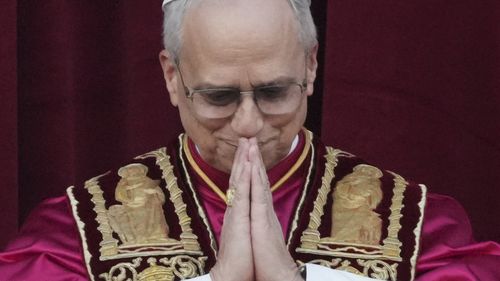Share this @internewscast.com
“An American’s election raised some eyebrows, especially when he chose the name Pope Leo XIV,” remarked Natalia Imperatori-Lee, head of religious studies at Manhattan University.
“It really means to me he will continue the work of Leo XIII.”

Pope Leo XIII, who guided the Catholic Church from 1878 to 1903, laid the groundwork for contemporary Catholic social doctrine, with his notable 1891 encyclical Rerum Novarum, which tackled issues of workers’ rights and capitalism at the onset of the industrial era.
He criticised both laissez-faire capitalism and state-centric socialism, giving shape to a distinctly Catholic vein of economic teaching.
The name “is a deep sign of commitment to social issues,” said Imperatori-Lee.

“By selecting this name, I believe this (new) pope is emphasizing the importance of social justice and indicating it will be a main focus. He is extending much of Francis’ work,” she mentioned.
Vatican spokesman Matteo Bruni confirmed that choice of the name Leo was a reference to Leo XIII and the social doctrine of the church, in particular the Rerum Novarum encyclical, considered the Catholic Church’s first social encyclical.
Another predecessor, Pope Leo I, was known for repelling the barbarian invasion of Atilla the Hun in 452 CE and dissuading him from sacking Rome through diplomacy, Italian Cardinal Mauro Piacenza told RAI Italian state TV.

He also noted that Pope Leo XIII elevated the Sanctuary of Our Lady of the Rosary of Pompeii to a papal basilica in 1901.
Leo could also refer to Brother Leo, the 13th century friar who was a great companion of Saint Francis of Assisi. By choosing such a name, the new pope could be signaling also a very strong continuity with Francis, who named himself after the saint.
For most of the Catholic Church’s first millennium, popes used their given names. The first exception was the 6th century Roman Mercurius, who had been named for a pagan god and chose the more appropriate name of John II.

White smoke billows from Sistine Chapel chimney as new pope elected
The practice of adopting a new name became ingrained during the 11th century, a period of German popes who chose names of early church bishops out of “a desire to signify continuity,” according to Reverend Roberto Regoli, a historian at Rome’s Pontifical Gregorian University.
For many centuries, new popes tended to choose the name of the pope who had elevated them to cardinal. John was the most popular, chosen by 23 popes, followed by Benedict and Gregory, each with 16.
It was from the mid-20th century that new popes began to choose names signaling the aim of their papacy, Regoli said.












